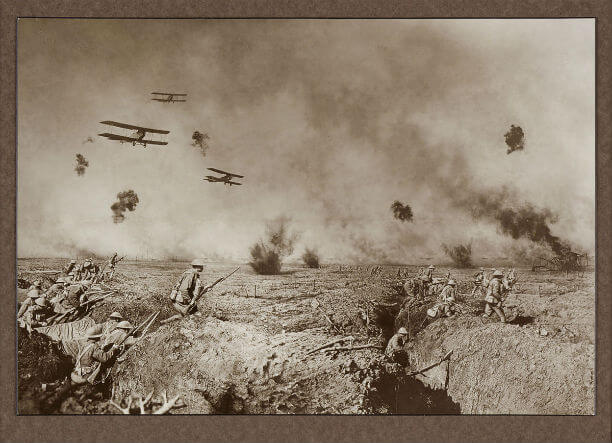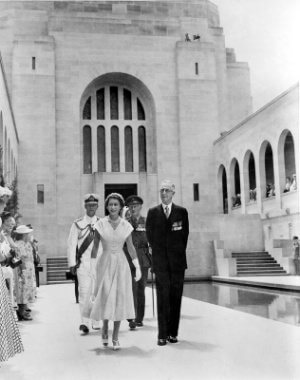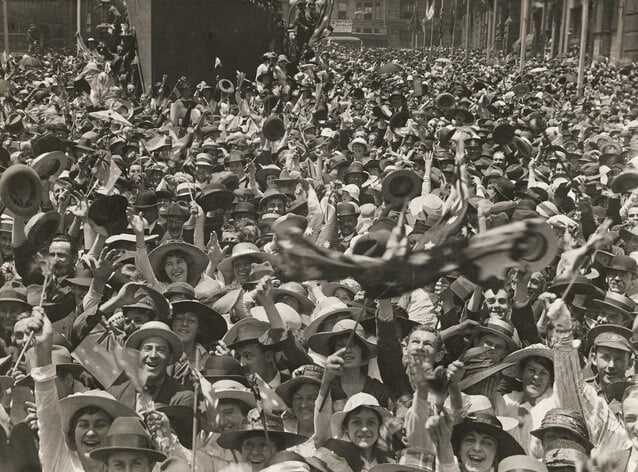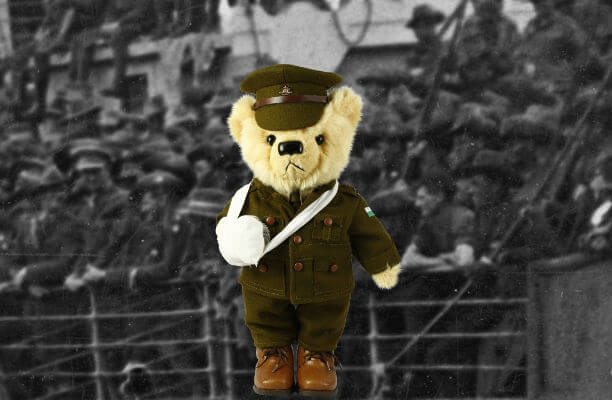
Exhibiting War
An episode after the Battle of Zonnebeke. One of the action packed composite photographs created by Frank Hurley to engage Australian audiences and evoke the battles of raging in Europe
As time passes and epoch-making moments recede further into history, each succeeding generation becomes further removed from the lived experience of those moments. Australia’s last WWI veteran, John Campbell Ross, passed away in 2009. With the passing of his generation, we no longer possess a living link with the Great War - a conflict which redefined the world, and Australia. Fortunately, the past can be conserved through the efforts of governments and societies. Australia boasts one of the world’s leading museums of military history in the form of the Australian War Memorial, and the growing popularity of Anzac Day events points to our society’s acknowledgement of the significance of the past, more than a century after the event it commemorates.
However, history is not something which develops spontaneously at some indeterminate point in time after an event. History is a narrative which is purposely constructed, curated and presented, in order to achieve a desired outcome - frequently even while “historical” events are unfolding. This represents the central underlying point of Jennifer Wellington’s book Exhibiting War. Wellington, a lecturer in modern global history at University College Dublin, recently presented a lecture on the topic of her new book at the National Library of Australia, organised by the Canberra Great War Studies Group.
By examining a range of different wartime exhibitions in Britain, Canada and Australia, Wellington reveals complex imperial dynamics in the ways these countries developed diverging understandings of the First World War, despite their cultural, political and institutional similarities. While in Britain a popular narrative developed of the conflict as a tragic rupture with the past, Australia and Canada came to see it as engendering national birth through violence.
Wellington explains that photographic and staged exhibitions on the war toured major Australian cities while the conflict was still in progress. These exhibitions served to inform the population at home, who were eager for any news from the theatres of war. Vast photographic panoramas, captured enemy weaponry, and even replica trench systems were assembled to provide visitors with an authentic perspective on the events in Europe and the Middle East. Ordinary Australians could gain a sense of closeness or proximity to the war, which satisfied the desire for current news and information from the front lines, but also kept the developments of war foremost in the national consciousness. In this manner, these touring exhibitions were used as a means to sustain support at home and to galvanise the national effort in persecuting the war abroad.
 Queen Elizabeth II being accompanied
Queen Elizabeth II being accompanied
by Charles Bean during a tour of the AWM
It also created an opportunity for Dominions, such as Australia and Canada, to develop independent national narratives and to stress their own contribution to the Empires war effort. As a result, war exhibitions purposely emphasised the important role that Australia and Australians were playing in the Empire, staking a claim to ownership of their part in this defining moment in history. In doing so, the war exhibitions developed and meticulously curated by figures such as Charles Bean (the official Australian war historian and father of the Australian War Memorial) emphasised a distinct Australian national character, and how the unique attributes of this dynamic national character (in contrast to the staid nature of British temperament) contributed to the vigour and success with which the war was fought. The enduring qualities of the romanticized figure of the Digger were established in the process - casual, practical, adaptable - traits with which a nation would come to identify itself.
Bean, with war photographers such as Frank Hurley, established the legend of ANZAC through these wartime exhibitions. They did so not only to publicise and popularise the role of Australians in service of the Empire, but also to harness the momentous change that the Great War brought about to define an Australian national “coming of age”. Their work, which began more than a century ago when the Great War was still raging, still has a profound influence on contemporary Australian society.
Dr Jennifer Wellington’s book Exhibiting War can be ordered through Cambridge University Press. Readers interested in the Canberra Great War Studies Group can visit the National Library of Australia’s web page for upcoming events.













